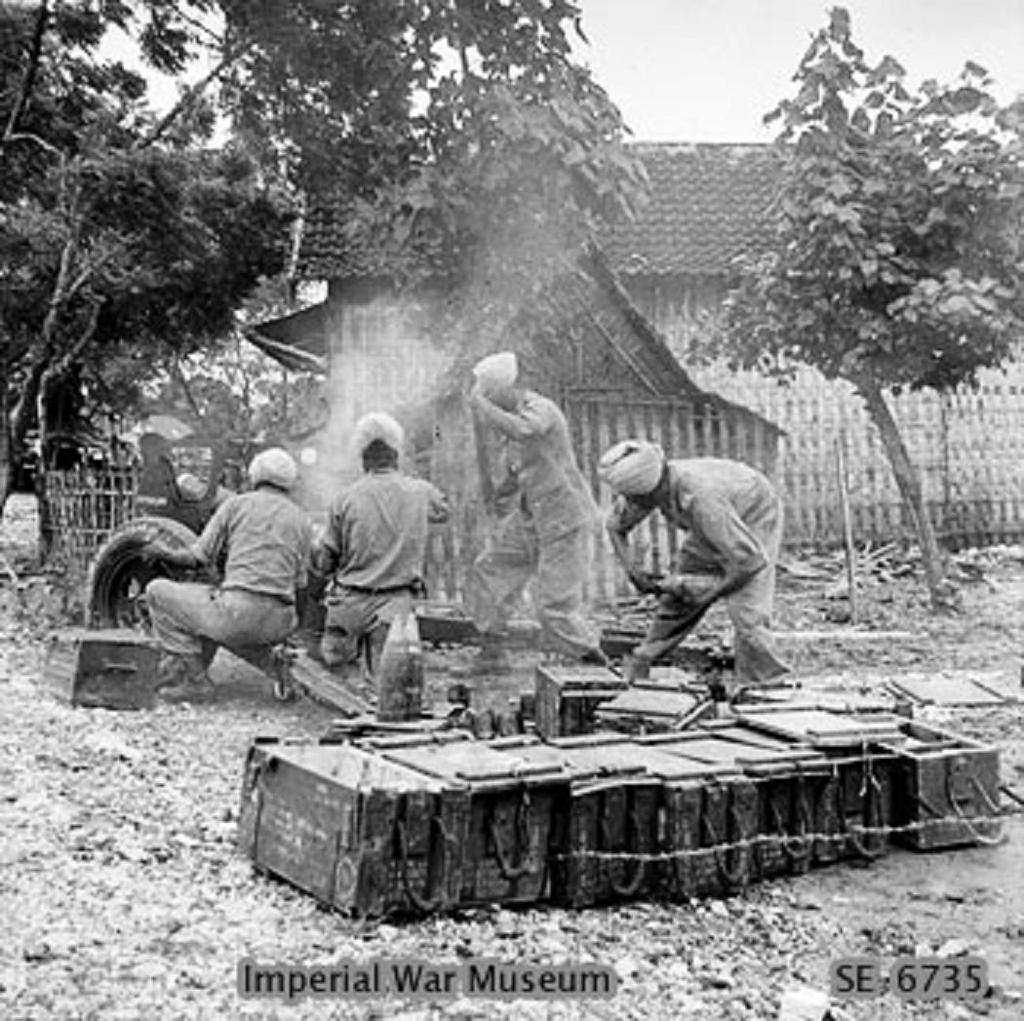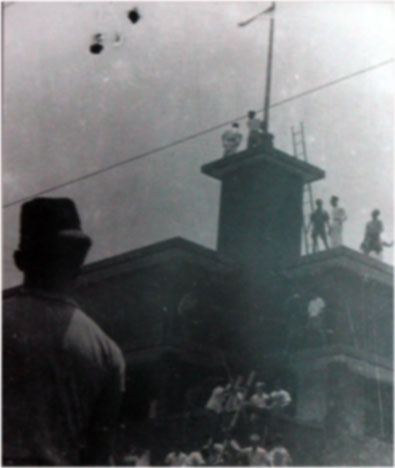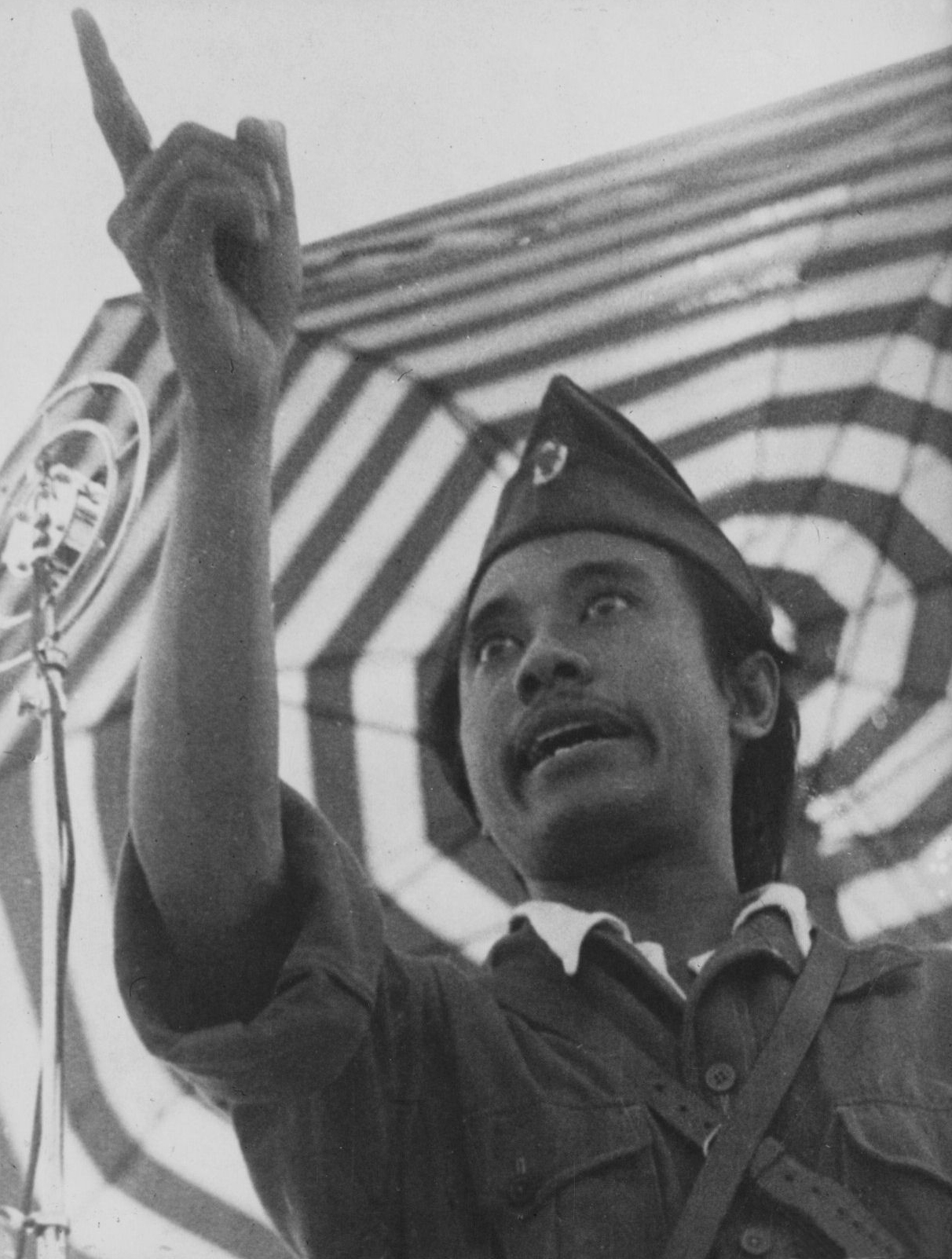
Today the right of November 10, we commemorate the struggle of the Indonesian nation our heroes fight to the death against the Dutch, who had invaded Nation Nation We Indonesia for 350 years to hitchhike to the Allied forces.
On 15 September 1945, British troops landed in Jakarta, then landed in Surabaya on October 25, 1945. The British are coming to Indonesia joined in AFNEI (Allied Forces Netherlands East Indies) and the decision on behalf of the Block Allies, with the task to disarm the Japanese army, free the prisoners of war were detained Japan and repatriate Japanese troops to the country. But besides that British troops were coming also on a mission to restore Indonesia as the administration of the colony of the Dutch East Indies. NICA (Netherlands Indies Civil Administration) took hitchhiking with a group of British soldiers for the purpose. This triggered turmoil led to the movement of the people of Indonesia and the Indonesian people's struggle everywhere against soldiers and government AFNEI NICA.
On 15 September 1945, British troops landed in Jakarta, then landed in Surabaya on October 25, 1945. The British are coming to Indonesia joined in AFNEI (Allied Forces Netherlands East Indies) and the decision on behalf of the Block Allies, with the task to disarm the Japanese army, free the prisoners of war were detained Japan and repatriate Japanese troops to the country. But besides that British troops were coming also on a mission to restore Indonesia as the administration of the colony of the Dutch East Indies. NICA (Netherlands Indies Civil Administration) took hitchhiking with a group of British soldiers for the purpose. This triggered turmoil led to the movement of the people of Indonesia and the Indonesian people's struggle everywhere against soldiers and government AFNEI NICA.

After the emergence of the Indonesian government edict dated August 31, 1945 which stipulates that beginning 1 September 1945 The national flag was hoisted Saka Merah Putih kept in all parts of Indonesia, the flag raising movement expanding to all corners of the city of Surabaya. Flag-raising climax movements in Surabaya torn flag incident happened at Yamato Hoteru / Hotel Yamato (named Oranje Hotel or Hotel Orange in the colonial era, now called the Hotel Majapahit) in Jl. Tunjungan no. 65 Surabaya.
A group of Dutch people under the leadership of Mr. W.V.Ch. Ploegman on the afternoon of 18 September 1945, exactly at 21.00, flying the flag of the Netherlands (Red-White-Blue), without the approval of the Regional Government of Indonesia Surabaya, on the pole at the top of Yamato Hotel, on the northern flank. The next day saw the youth Surabaya and became angry because they thought the Dutch had insulted the sovereignty of Indonesia, wanted to restore the power back in Indonesia, and harass the movement of the flag raising was held in Surabaya.

Indonesia flag after flag hoisting dutch successfully ripped blue color in Yamato
Shortly after the mass at the Hotel Yamato mengumpulnya, Resident Sudirman, warrior and diplomat who was serving as the Deputy Resident (Fuku Syuco Gunseikan) are still recognized government Syu Dai Nippon Surabaya, Surabaya as well as the Regional Resident GoI, coming through the crowd and entered Fingerprint Yamato escorted to the hotel and Hariyono. As the representative of Indonesia he negotiated with Mr. Ploegman and his friends and asked that the flag of the Netherlands immediately derived from Yamato Hotel building. In these negotiations Ploegman refuse to lower the Dutch flag and refused to recognize the sovereignty of Indonesia. The talks heated up, Ploegman pulled a gun, and there was a fight in a negotiation. Ploegman died strangled by Fingerprint, which also killed by Dutch soldiers on guard and heard the gun Ploegman, while Sudirman and Hariyono fled outside the Hotel Yamato. Some youths scramble up to the top of the hotel to drop off the Dutch flag. Hariyono originally with Soedirman back into the hotel and is involved in climbing the flagpole and with Koesno Wibowo managed to lose the Dutch flag, ripping part of the blue, and mengereknya back to the top of the flag pole as the flag.
After the incident at the Hotel Yamato, on October 27, 1945 the first battle erupted between Indonesia against the British army. Small attacks are later turned into a general strike many casualties on both sides Indonesia and the UK, before finally General DC Hawthorn President Sukarno's call for help to defuse the situation.

Buick Brigadier General Mallaby which exploded near the Red Bridge Building and Surabaya Internatio
After the cease-fire between the Indonesian and British soldiers signed on October 29, 1945, the state gradually subsided. Even so it still occurs armed clashes between the people and the British troops in Surabaya. Armed clashes in Surabaya culminated with the killing of Brigadier General Mallaby, (head of the British army for the East Java), on October 30, 1945 around 20:30. Buick carrying Brigadier General Mallaby Indonesia passed a group of militia when going past the Red Bridge. Misunderstanding leads to shootout that ended with the death of Brigadier General Mallaby by gun shot a young Indonesian man hitherto unknown, and the burning of the car is hit by a grenade explosion that causes the body Mallaby difficult to identify. Mallaby's death led to the mad English to Indonesian and the resulting substitute decision Mallaby, Maj. Gen. Eric Carden Robert Mansergh to 10 November 1945 issued an ultimatum to the Indonesian request handed weapons and stop fighting the army and administration AFNEI NICA.
After the killing of Brigadier General Mallaby, his successor, Major General Robert Mansergh issued an ultimatum that says that all the leaders and people of Indonesia were armed to report and put the gun in a determined and surrendered with arms raised. Limit ultimatum is at 6:00 am on 10 November 1945.

Arek Surabaya-arek carrying stakes in the battle of Surabaya
Ultimatum is then considered as an insult to the fighters and people that have shaped many agencies struggle / militia. The ultimatum was rejected by the Indonesian side of the Republic of Indonesia on the grounds that it was already established, and the People's Security Army TKR has also been established as a state army. In addition, many organizations have formed armed struggle of society, including the youth, students and students who oppose the re-entry of the Dutch who ride with the presence of British troops in Indonesia.

The British occupoation of Java. An Indian soldier uses a knocked out Indonesian nationalist tank as cover in a main street in Surabaya (Soerabaja) during the fighting.
On 10 November morning, the British army began a large-scale attack, beginning with aerial bombing government buildings to Surabaya, and then deploy about 30,000 infantry, a number of aircraft, tanks, and warships.
England then bombarded the city of Surabaya with cannon from the sea and land. Indonesian troops and militia resistance then raged across the city, with the active assistance of the residents. Involvement of the population in this battle resulted in thousands of civilians falling victim in the attack, both dead and wounded.

Bung Tomo in Surabaya, one of the revolutionary leaders of Indonesia's
most respected. This famous photo of many people involved in the
Indonesian National Revolution represents the soul of Indonesia's main
revolutionary struggle at the time.
To her surprise the British who suspect that the resistance in Surabaya can be conquered in three days, the community leaders such as Bung Tomo young pioneers which have great impact in the community continues to drive the spirit of resistance Surabaya youth so that resistance persists in the large-scale attack England.
Religious leaders comprising the ulama and the Javanese cottage kyais like KH. Hashim Ash'ari, KH. Wahab Hasbullah and other schools kyais also mobilized their students-students and civil society as a militia resistance (at that time the community was not so obedient to the government but they are more docile and obedient to the clerics) shingga Indonesia longstanding opposition party, from day to day, from week to week to another. Resistance of the people who initially spontaneous and uncoordinated, increasingly organized. This large-scale battle reaches up to three weeks, before the entire city of Surabaya eventually fell in the hands of the British.

At least 6.000 to 16.000 of the Indonesian fighters were killed and 200,000 displaced civilians from Surabaya. Victims of British and Indian troops roughly a 600 - 2000 troops. The bloody fighting in Surabaya which took thousands of lives have been moving across the Indonesian people's struggle to repel the invaders and defend freedom. The number of fallen fighters and civilians who were victims of the November 10 day's later remembered as Heroes' Day by the Republic of Indonesia to the present.
Source : http://id.wikipedia.org/wiki/Peristiwa_10_November, last edited , 9 November 2012, 03.59 UTC.


Tidak ada komentar:
Posting Komentar